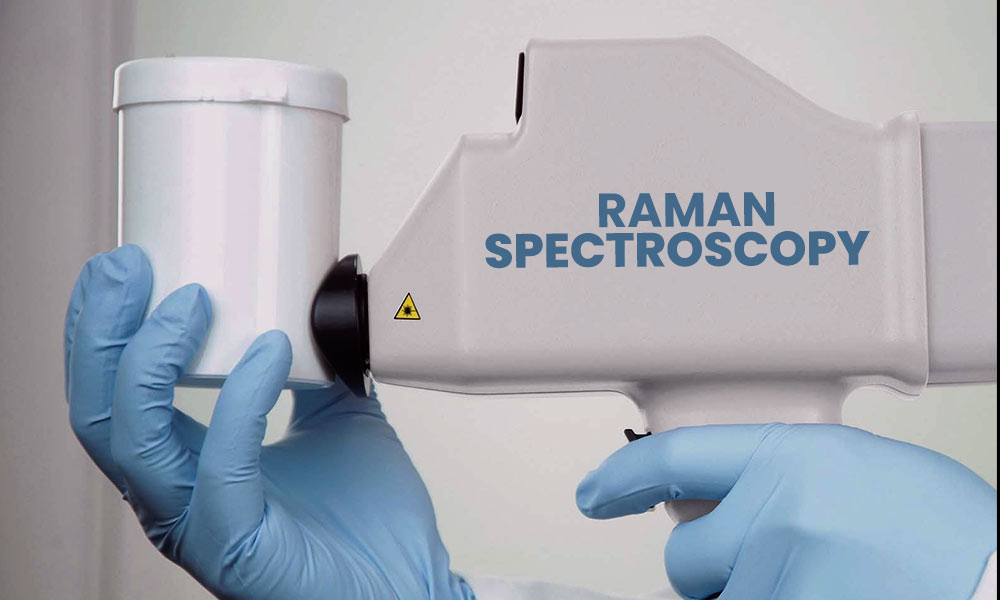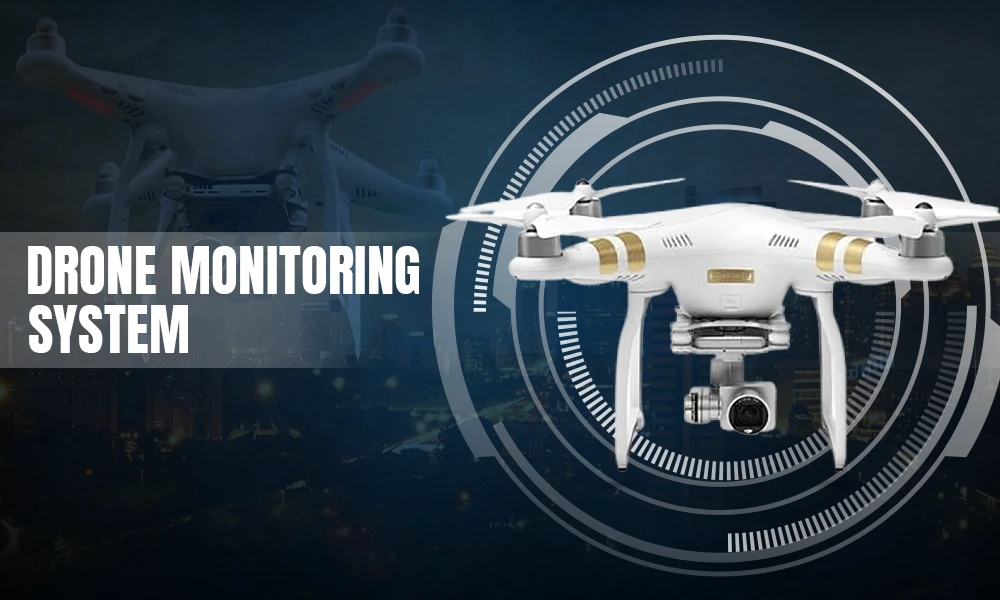Fascinating Applications of Raman Spectroscopy in Modern Technology

Specialized spectroscopy, which is an analytical technique based on the scattering of light, has revolutionized multiple fields of modern technology with its remarkable capabilities.
By providing molecular-level information about samples, Raman spectroscopy has found extensive applications in diverse areas, ranging from healthcare and materials science to environmental monitoring and art conservation. Its impact can be witnessed through its ability to identify counterfeit drugs, enable non-invasive diagnosis of diseases like cancer, and aid in preserving cultural artifacts.
In this blog, explore the captivating applications of this spectroscopy that showcase its transformative power in shaping the landscape of modern technology.
The History
Raman spectroscopy, named after Sir C.V. Raman, emerged in the early 20th century and became an invaluable tool in scientific research. It provided molecular-level information about samples through the scattering of light. Initially used for fundamental studies in physics and chemistry, it quickly found applications in pharmaceutical analysis, biomedical diagnostics, materials science, environmental monitoring, forensic investigations, and art conservation.
Its non-destructive nature and ability to provide molecular fingerprints revolutionized these fields, paving the way for advancements in personalized medicine, materials development, environmental assessment, and cultural heritage preservation. Today, Raman spectroscopy plays a vital role in various scientific disciplines, shaping the landscape of modern technology.
Pharmaceutical Analysis
Raman spectroscopy is crucial in pharmaceutical analysis, providing rapid and non-destructive identification of drug compounds. Its ability to distinguish between genuine and counterfeit drugs ensures patient safety.
Moreover, Raman spectroscopy is extensively employed in formulation analysis, quantification of drug content, and monitoring drug stability during manufacturing processes. This application streamlines pharmaceutical development and quality control procedures.
Biomedical Diagnostics
Over the years, Raman spectroscopy has been embraced for multiple reasons. It has helped medical science in several ways and aids in the timely detection of diseases including cancer by enabling non-invasive analysis of biological tissues. Raman spectroscopy can precisely identify and differentiate healthy and diseased tissues and provides valuable insights into the molecular changes associated with different pathologies. It has non-invasive nature which makes it an ideal real-time, in vivo diagnostic tool.
Forensic Investigations
Forensic scientists rely on Raman spectroscopy to analyze trace evidence found at crime scenes, such as fibers, paints, and drugs. Its capability to quickly and accurately identify and characterize substances makes it an indispensable tool for forensic investigations.
Environmental Monitoring
As it enables easy identification and quantification of organic and inorganic pollutants in air, water, and soil samples, Spectroscopy like Raman’s has a crucial role in environmental monitoring and analysis.
It provides accurate information on pollutant composition and helps in deeply assessing environmental quality. Apart from this, it also supports pollution control and remediation to prevent further damage and restore the damage that has already been done. The sensitivity and versatility of Raman’s spectroscopy make is what makes it a valuable tool for studying ecological impacts.
Materials Science:
Raman spectroscopy has become an indispensable tool in materials science research. Scientists utilize it to investigate materials’ structural, chemical, and mechanical properties at the microscopic level.
An instrument like this, enables the analysis of thin films, nanoparticles, and composite materials, providing valuable information for developing new materials with enhanced properties. It is crucial to advance energy storage, electronics, and catalysis technologies.
Nanotechnology:
Even in the field of nanotechnology, it serves as a valuable characterization technique that allows researchers to indulge in a deep study and analyze nanomaterials with exceptional precision that include carbon nanotubes and graphene. It’s definitely an effective tool as it provides insights into nanoparticle size, shape, and composition which facilitates their optimization for various applications, like sensors, energy devices, and drug delivery systems.
Semiconductor Industry:
The semiconductor industry relies on Raman spectroscopy for quality control and process optimization. By providing valuable information about the composition, crystal structure, and defects in semiconductors,
A type of this spectroscopy enables manufacturers to improve their fabrication processes, enhancing device performance. It is also employed for failure analysis and characterization of microelectronic devices, helping identify defects and optimize device design and implementation.
Food Quality and Safety:
Raman spectroscopy finds practical applications in the food industry for quality control and safety assessment. It can identify and quantify various components of food products, including fats, proteins, and carbohydrates, ensuring compliance with regulatory standards.
In addition, it can also detect contaminants, allergens, and impurities, contributing to safer food production and protecting consumer health. Its non-destructive nature allows for rapid analysis without compromising the integrity of the food sample.
Energy Storage and Conversion:
One should appreciate Raman spectroscopy because the creation of cutting-edge energy storage and conversion devices is largely depending on it. Besides, it facilitates scientists in examining and comprehending how materials used in batteries, fuel cells, and photovoltaic devices behave.
Not only this, but it’s also helpful in characterizing electrode materials, researching ion diffusion mechanisms, and keeping a bird’s eye on how energy storage devices degrade to maximize their performance, longevity, and lifespan. It further assists in creating more efficient, sustainable, and practical energy storage solutions by providing insights into the structural and chemical changes occurring during charge-discharge cycles.
How Raman Spectroscopy Helps the Environment
Raman spectroscopy plays a significant role in environmental monitoring and analysis, aiding in the assessment and management of environmental quality. Here’s how it helps the environment:
Pollution Analysis
Raman spectroscopy is an important instrument that allows scientists to identify and quantify pollutants in air, water, and soil samples. It is equally helpful in detecting organic and inorganic contaminants and provides valuable insights into their composition and concentrations. Which later helps in assessing pollution levels, understanding pollutant sources, and drafting effective remediation strategies.
Contaminant Detection
Raman spectroscopy can detect contaminants in environmental samples, including harmful chemicals and toxins. It allows for rapid screening and identification of pollutants, aiding in the early detection and prevention of environmental hazards.
Soil Analysis
This also helps analyze soil composition and assess soil quality. It provides insights into soil minerals, organic matter, and contaminants present in the soil. This information assists soil remediation efforts, sustainable agriculture practices, and land-use planning.
Water Quality Assessment
Raman spectroscopy significantly contributes to water quality assessment by identifying and quantifying pollutants available in water samples. It identifies pollutants like heavy metals, organic compounds, and metal pesticides. It monitors drinking water sources, detects potential risks, and implements appropriate treatment measures to remove contaminants.
Environmental Monitoring Devices
It is integrated into portable devices for on-site environmental monitoring. These devices enable real-time analysis of pollutants and contaminants, facilitating quick decision-making and immediate actions to protect the environment and public health.
Waste Characterization
Raman spectroscopy assists in characterizing waste materials, including solid waste, hazardous waste, and industrial by-products. It provides insights into waste composition, aiding in waste management strategies such as recycling, treatment, and disposal.
Environmental Forensics
This type of Spectroscopy primarily belongs to environmental forensics, which helps in identifying, analyzing, and tracing the evidence related to environmental incidents like oil spills, chemical leaks, or illegal waste dumping. It’s effective and helpful in determining the origin and composition of contaminants, facilitates further investigations, and holds responsible parties accountable.
Climate Change Research
Apart from all this, it also contributes significantly to climate change research by keeping a check on atmospheric gases and pollutants. It facilitates the analysis of gas concentrations, sources, and their impact on climate change. Along with this, it gives supporting efforts to mitigate and adapt to global environmental challenges.
This instrument has diverse uses and helps researchers, policymakers, and environmental professionals in making informed decisions. It helps in drafting and implementing effective strategies for the conservation of the environment and sustainable development.
Conclusion
Raman spectroscopy is poised to play a vital and even more significant role in unraveling the complexities of materials with the advancement of technology. In the future, it will contribute to the development of novel technologies which will be aimed at the betterment of humans and enhancing human understanding of the world around them.










